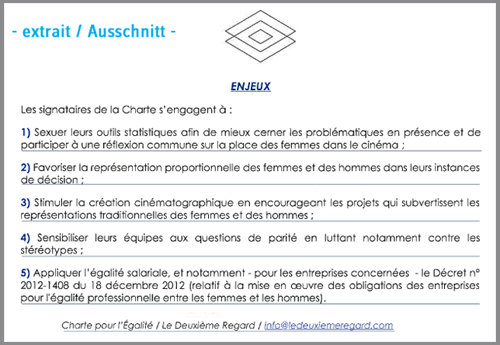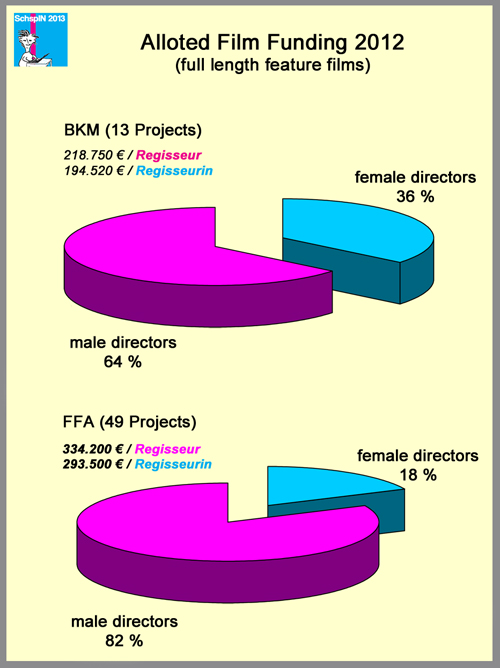“Tis early practice only makes the master.” Discussing possible effects a strong gender imbalance in film and television may have on a young audience (thoughts from London, Los Angeles and Berlin), the Saure Gurke / Pickled Cucumber Award and female lawyers.
How do readers find their way to SchspIN? Well, some come directly or via link on another website or because they follow the blog (top right: there’s a link Blog abonnieren / Follow Blog via Email), and some are directed here by search engines.
The other day a reader googled “Happy birthday Bilder für Männer” (happy birthday pictures for men) and another “junge fraulein und elder man” (young fraeulein and elder man) – so much for search engines 🙂 . Quite regularly people search for Sesamstraße (the German version of Sesame Street) or protagonists from that show and are directed to this article: Happy Birthday, German Sesame Street! which I wrote a few months ago on the occasion of the 40th birthday of the Sesamstraße about the immense male majority among characters, puppets and monsters on the show. Does growing up with children’s programmes without or with hardly any female characters result in the audience (and especially those ending up in decision-making positions) not noticing the immense female minority of women in fictional and non-fictional TV as adults?
For other impacts this imbalance may have, read the article “If she can’t see it, she can’t be it: why media representation matters“ (Guardian, Nov. 12) by London-based freelance filmmaker and creative communications professional Rebecca Brand.
She argues: Whether we like to admit it or not, the characters who inhabit our screen stories – who we fall in love with, laugh with, cry with, and grow older with – have an impact on our lives. They help to shape who we are, who we aspire to be, and how we view the world around us. That’s why representation in mainstream media matters. (…) What message are we giving those impressionable minds about women? And how might we be cutting the ambitions of little girls short before they’ve even had the chance to develop properly?
If girls grow up, watching a clear male majority on TV as the norm – and at the same time being surrounded by a pink princess monoculture created by the toy and sweets industry, how can they ever start to dream of becoming a pirate, a secret agent, a farmer, a nuclear physisist, a car race driver or an inventer? And how can boys image girls to be capable of more than dressing in pink and being rescued?
Rebecca Brand is currently working on a documentary on the “audacious and provocative protest against the world’s attempts to sexualise and commodify childhood, by award-winning performance artist Bryony Kimmings and her nine-year-old niece Taylor.” The title of the project is “Credible Likeable Superstar Role Model” and it is curently still in the financing phase.
In the USA, the Geena Davis Institute on Gender in Media, founded by actress Geena Davis in 2004, is also concerned about the appaling imbalance in gender representation. “The Institute is uniquely positioned to spotlight gender inequalities at every media and entertainment company through cutting-edge research, education, training, strategic guidance and advocacy programs.” A study of about 400 G, PG, PG-13, and R-Rated movies showed a ratio of 3 males to 1 female part. With its initiatives the institute aims at changing female portrayals and gender stereotypes in children’s media and entertainment.
Similar topics were also discussed at the 36th autumn meeting of media women from ARD and ZDF (the two main German public TV channels), ORF (Austrian public broadcaster) and Swiss broadcasting corporation, who met in early november in Berlin, as guests of their female colleagues at RBB (public service TV and radio Berlin Brandenburg) and Deutschlandradio (German Radio, a public broadcaster). “What is the role women play in public service stations? How are we women shown? What has changed for the better in the last years?”
And like every year, they awared the Saure Gurke (pickled cucumber), a negative prize for TV programmes:
- that don’t include women
- that define women by their bodies
- that force overidealizing rolemodels upon the audience
And the winner in 2013 is: KALTER ENGEL (Cold Angel), the latest Tatort from Erfurt (Tatort / Crime Scene is the most successful fictional programme on German TV, approximately 40 new 90 min. films every year, taking place in a number of towns – this one in Erfurt). The Jury justified their decision by saying “Here we encounter female characters that we have come to know and love in 40 years of Tatort: the saint, the whore, the dictatoral boss and a murder victim that is to blame for her death. Even a Tatort of today can belong very much to the past!”
Now let’s just imagine there was also a junior award – let’s call it the Gherkin – for programmes for children that comply with the award’s standards. Well, then I would suggest giving it to an episode from Deutschlandradio Kultur’s daily children’s programme Kakadu (cockatoo): Arrested by the Police – what happens next? from Nov 2, 2013 (author: Corinna Thaon, contributing editor: Claudia König-Suckel). (Edit 2018: the page is not online any more).
So what was that about?
Charlie is caught by the police while commiting his 15th burglary. But what happens to a culprit after that? Under our rule of law people that breach the law are punished. But they have to be treated in a fair way. After the committing of a crime has been proofen by the prosecution and the police, the accused goes on trial.
It was a very well done programme, some children and a lawyer explained terms like trial, punishment and defence from their points of view and a trial was reenacted. So far so good – were it not for the fact that there were ONLY ONLY ONLY men appearing in the trial. A male lawyer, a male prosecutor, a mal judge and even a male clerk are mentioned. The trial is reenacted by an actor (Stefan Kaminski) who speaks all the parts: the accused, the solicitor, the procecutor, the lawyer and a witness.
The host of the show – Ulrike Jährling – said at the end: “now this was a just and fair discovery day today“, but it wasn’t really just and fair genderwise, and it is not in the least depicting the reality of the German judical system, which is not a “men only” world.
Just some facts to underline this: Law is the 4th favourite subject among female students in Germany, and the 5th favourite among the males. The share of women among the students starting to study it has risen from 49 to 57 % in the last years.
Since 2009 the German Federal Minister of Justice has been Sabine Leutheusser-Schnarrenberger (FDP – Liberal Party).
Last month an article by Annette Ramelsberger was published in the magazine of the Süddeutsche Zeitung (Issue 40/2013, Oct. 7), titled Die neue Rechtsordnung / “The new legal order”, in which she wrote “For centuries the Justice was firmly in the hands of men. Now women are moving to the top and they are changing the system thoroughly. Today more female than male judges are newly employed,as well as more female than male prosecutors. In the prosecution women hold the majority already.” There is still a majority of male judges, but there’s a female majority already among the under 40s. “Only one number has not changed: 90 % of the accused are men.”
In the light of these facts it is quite sad to have a radio programme for children that portrays the whole law world as a man’s world. How many girls listening to the Kakadu episode will have thought: “Yes, justify! I want to be a prosecutor when I grow up!”?
P.S.: A short comment on today’s title which of course is a quote from Wilhelm Tell / -William Tell by Friedrich Schiller (1804). From Act III Scene 1 (Translated by Theodore Martin)
Court before TELL’S house. TELL with an axe. HEDWIG engaged in her domestic duties. The children WALTER and WILHELM in the background playing with a little cross-bow.
HEDWIG. The boys begin to use the bow betimes.
TELL. ‘Tis early practice only makes the master.
HEDWIG. Ah! Would to heaven they never learnt the art!
Hedwig is talking of the art of weaponry, but this quote can probably be easily transferred to today’s media and gherkin-situations.












